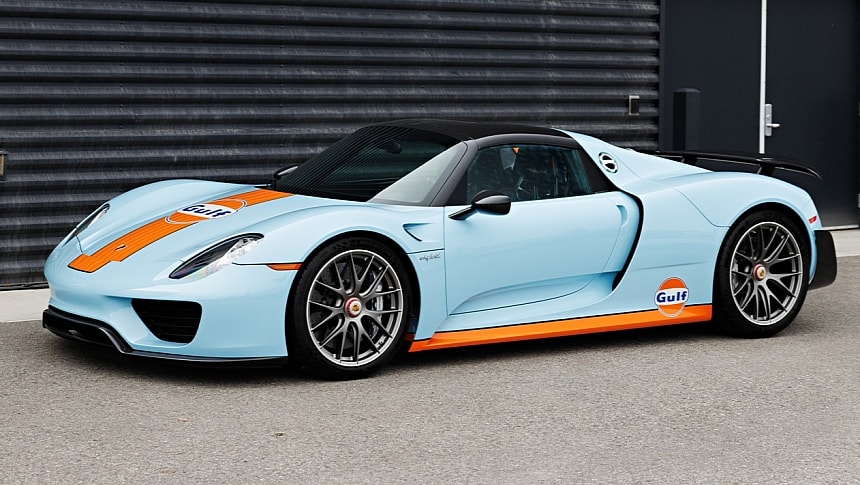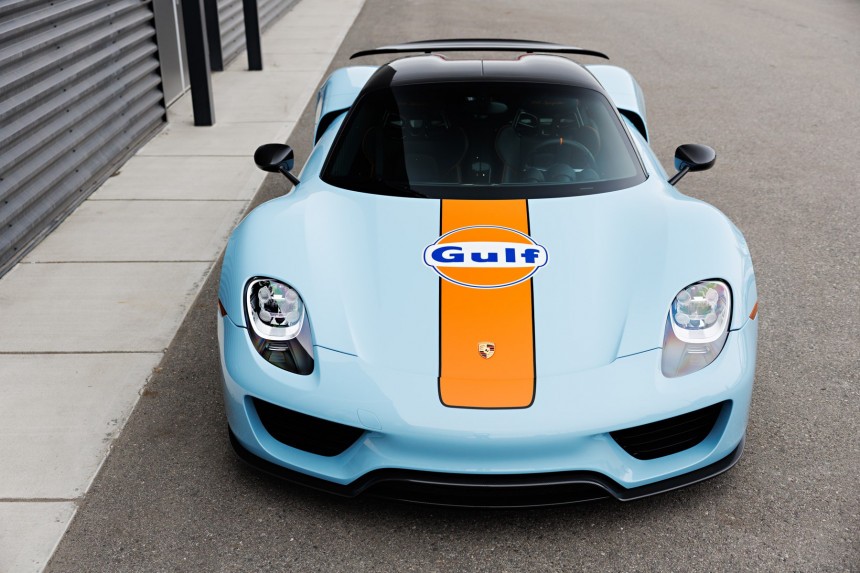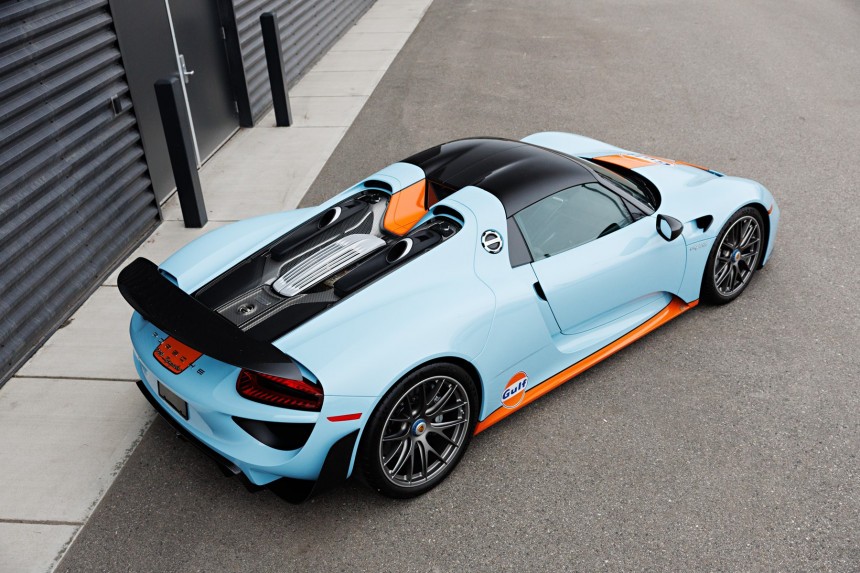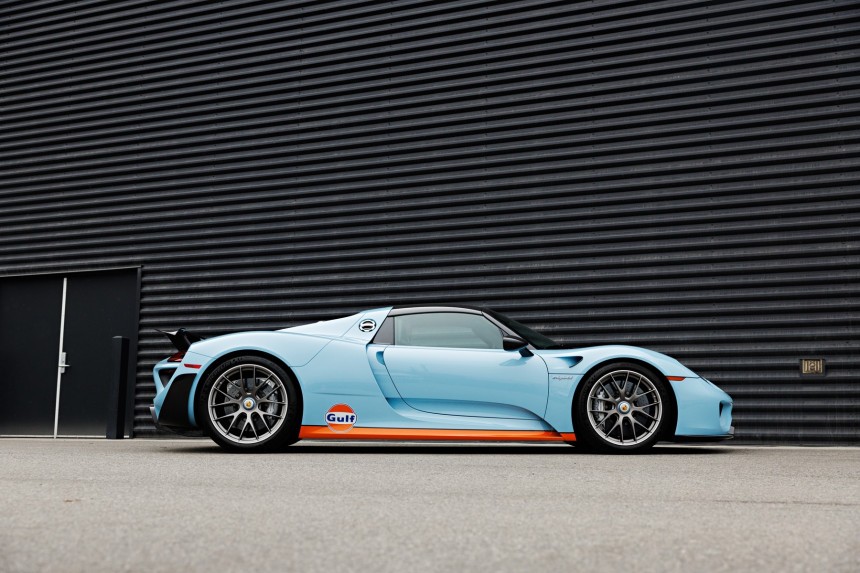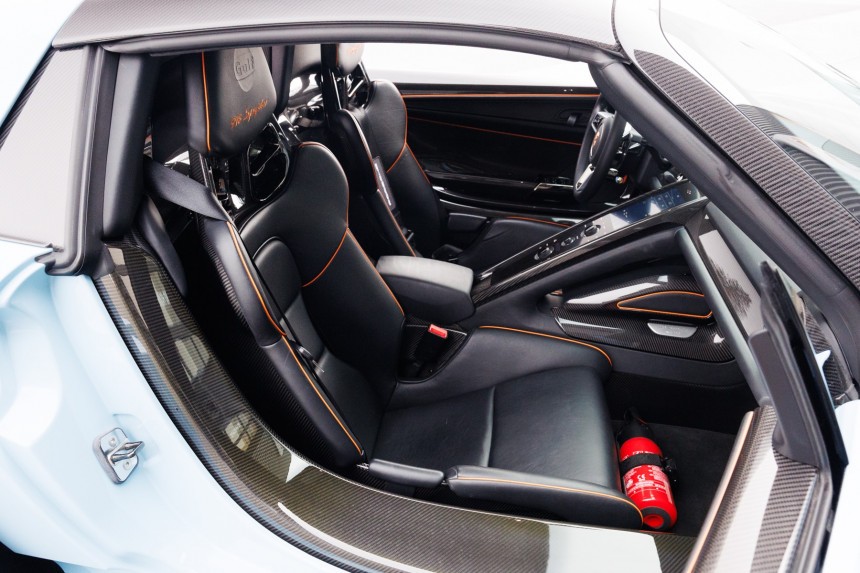The ardent track wars between Ford and Ferrari in the mid-to-late-sixties caught the motoring world's attention and sparked a revolution. Unwillingly, Ford’s last overall triumph at the Circuit de la Sarthe from the Blue Oval's original winning streak triggered an upheaval of Germanic proportions. In the wake of American dominance, Porsche picked up the high-speed gauntlet and made history.
In 1967, Grady Davis, the vice president of Gulf Oil, made an executive decision to get his company’s name on the highest podium at Le Mans. Since Ford Motor Company wasn’t interested in putting more nails in the Ferrari coffin, Gulf took over the racing program and the affiliated GT40 cars. What followed is legendary – two more back-to-back overall wins in the most famous endurance race in the world.
1969 is of particular importance for this story, as it witnessed the closest finish in the race’s century-old history (not counting the 1966 1-2-3 by Ford, which was a show-off of Detroit proportions in front of Enzo Ferrari). An ailing Gulf Ford GT40, running on fuel fumes, overtook the leader, a Porsche 908, at the end of the 3.2-mile (5 km) Mulsanne Straight and took the checkered flag 390 feet in front of the runner-up.
This bitter defeat prompted the Germans to develop the 917 that blitzed the track in 1970 in a manner so convincing that it converted most of the following year’s participants to the Porsche creed. Of the 49 cars lined up on the 1971 Le Mans grid, 33 wore the Rearing Horse emblem of Stuttgart, a standing record to this day.
As for Gulf Oil, it had its fair share of publicity, and the blue-and-orange liveries have become synonymous with success. Porsche themselves put on the Gulf racing colors in 1970 and again in 1971 when the blockbuster Le Mans movie was shot, with Steve McQueen driving in the race. Yes, the ‘Bullitt’ Steve McQueen, the ‘Ford Mustang v Dodge Charger R/T’ Steve McQueen.
Fast forward several decades, and Porsche and Gulf Oil no longer dance the victory dance in motorsports. However, one particular fan of the carmaker simply ignored reality and ordered not one but two brand new Porsche 918 Spyders in Powder Blue and Tangerine color combos. The Germans quickly retaliated by waving the licensing rights expiration date. Since the two companies didn’t have any partnerships in 2015, the client was presented with a very unsophisticated ‘No’ for an answer to his request.
However, the buyer was just as stubborn and relentless as Porsche themselves, and he presented the carmaker with an option. If he were to get Gulf to greenlight the paint job, would Porsche shake hands over it? Now, when you’re a big car company like the German House of Speed, you can say 'No' to a customer twice and walk away. However, this was no ordinary car and, by all means, no ordinary order.
The 918 was the Porsche hybrid hypercar, launched in 2013 and built in just 918 examples until 2015. Most of them went to consecrated Porsche customers invited to buy the rare car. Two of the 28 vehicles allotted for the Canadian market subsequently left the factory in the famous pale blue and orange Gulf hues.
The two Porsche 918 Gulf cars were completed in late 2015, and they are not identical twins, differentiated by their striping, seat piping, and interior trim. Since these were the only two examples allowed to wear the historic colors and theme, Porsche didn’t go their usual way of vinyl-wrapping the bodies, preferring a full-blown painting solution.
One of the two Gulf Twins, number 325 in the series of 918 units, also wears the Weissach package that was ordered on 229 other Porsche 918 Spyders. The Gulf accents are on the inside of the hybrid hypercar with orange piping and stitching on black leather seats. The Gulf emblem embossed into the headrests was custom-made by Porsche specifically for these two cars.
The build sheet of this one-of-two has a note that reads: “Option Code CXX. Custom Tailoring Option (special wishes that require further communication) $108,505.” Not too bad for a bespoke paint job and assorted trim on a super-select automobile.
Don’t get me wrong; the slashing extra cost included a front-axle lift, carbon fiber mats with Gulf Orange piping, a set of bags with Gulf Orange contrasts, six-point racing harnesses, and a Burmester Surround Sound system. As a curiosity, the twin cars (the other Gulf 918 Spyder) was unveiled on September 18, 2015, 18 minutes past nine o’clock in the evening, at the Roche Bobois Atlanta dealership. See the video below for the debut of the two Gulfs.
In other words, the Gulf 918 broke cover on 9/18 at 9:18 PM during a private event. Precisely 3,087 days and 376 odometer miles later (605 km), this ultra-rare Porsche 918 is going under the hammer at the Amelia Island auctions on March 1. The brief second video shows the car in a dealership showroom in Kelowna, British Columbia, Canada, several years ago.
The estimated price range sits between $2,500,000 and $3,000,000, well above the $1.45 million market average for the 918 Spyder. The buyer will get one of the original members of the Holy Trinity of hybrid hypercars (the other two being the McLaren P1 and the Ferrari LaFerrari). The Porsche 918 has a 4.6-liter naturally-aspirated V8 driving the rear via a dual-clutch seven-speed automatic box and twin electric motors for the front wheels.
The 600-hp (608 PS) combustion engine combines with the electric units upfront (286 combined hp - 290 PS) for a total output of 887 hp (898 PS) and (944 lb-ft) 1,280 Nm. That’s enough to hit 62 mph (100 kph) in 2.6 seconds from a standing start and 214 mph (344 kph) when going flat out. The regular version weighs 3,700 lbs. (1,675 kg), but the example in Gulf colors is slightly slimmer, thanks to the Weissach Package, by about 100 lbs—/45 kg.
1969 is of particular importance for this story, as it witnessed the closest finish in the race’s century-old history (not counting the 1966 1-2-3 by Ford, which was a show-off of Detroit proportions in front of Enzo Ferrari). An ailing Gulf Ford GT40, running on fuel fumes, overtook the leader, a Porsche 908, at the end of the 3.2-mile (5 km) Mulsanne Straight and took the checkered flag 390 feet in front of the runner-up.
This bitter defeat prompted the Germans to develop the 917 that blitzed the track in 1970 in a manner so convincing that it converted most of the following year’s participants to the Porsche creed. Of the 49 cars lined up on the 1971 Le Mans grid, 33 wore the Rearing Horse emblem of Stuttgart, a standing record to this day.
Fast forward several decades, and Porsche and Gulf Oil no longer dance the victory dance in motorsports. However, one particular fan of the carmaker simply ignored reality and ordered not one but two brand new Porsche 918 Spyders in Powder Blue and Tangerine color combos. The Germans quickly retaliated by waving the licensing rights expiration date. Since the two companies didn’t have any partnerships in 2015, the client was presented with a very unsophisticated ‘No’ for an answer to his request.
However, the buyer was just as stubborn and relentless as Porsche themselves, and he presented the carmaker with an option. If he were to get Gulf to greenlight the paint job, would Porsche shake hands over it? Now, when you’re a big car company like the German House of Speed, you can say 'No' to a customer twice and walk away. However, this was no ordinary car and, by all means, no ordinary order.
The two Porsche 918 Gulf cars were completed in late 2015, and they are not identical twins, differentiated by their striping, seat piping, and interior trim. Since these were the only two examples allowed to wear the historic colors and theme, Porsche didn’t go their usual way of vinyl-wrapping the bodies, preferring a full-blown painting solution.
One of the two Gulf Twins, number 325 in the series of 918 units, also wears the Weissach package that was ordered on 229 other Porsche 918 Spyders. The Gulf accents are on the inside of the hybrid hypercar with orange piping and stitching on black leather seats. The Gulf emblem embossed into the headrests was custom-made by Porsche specifically for these two cars.
Don’t get me wrong; the slashing extra cost included a front-axle lift, carbon fiber mats with Gulf Orange piping, a set of bags with Gulf Orange contrasts, six-point racing harnesses, and a Burmester Surround Sound system. As a curiosity, the twin cars (the other Gulf 918 Spyder) was unveiled on September 18, 2015, 18 minutes past nine o’clock in the evening, at the Roche Bobois Atlanta dealership. See the video below for the debut of the two Gulfs.
In other words, the Gulf 918 broke cover on 9/18 at 9:18 PM during a private event. Precisely 3,087 days and 376 odometer miles later (605 km), this ultra-rare Porsche 918 is going under the hammer at the Amelia Island auctions on March 1. The brief second video shows the car in a dealership showroom in Kelowna, British Columbia, Canada, several years ago.
The 600-hp (608 PS) combustion engine combines with the electric units upfront (286 combined hp - 290 PS) for a total output of 887 hp (898 PS) and (944 lb-ft) 1,280 Nm. That’s enough to hit 62 mph (100 kph) in 2.6 seconds from a standing start and 214 mph (344 kph) when going flat out. The regular version weighs 3,700 lbs. (1,675 kg), but the example in Gulf colors is slightly slimmer, thanks to the Weissach Package, by about 100 lbs—/45 kg.
